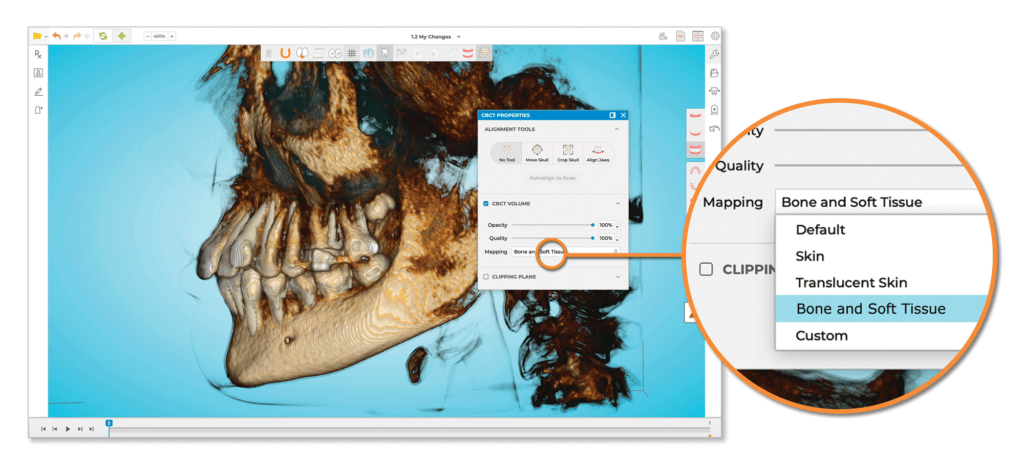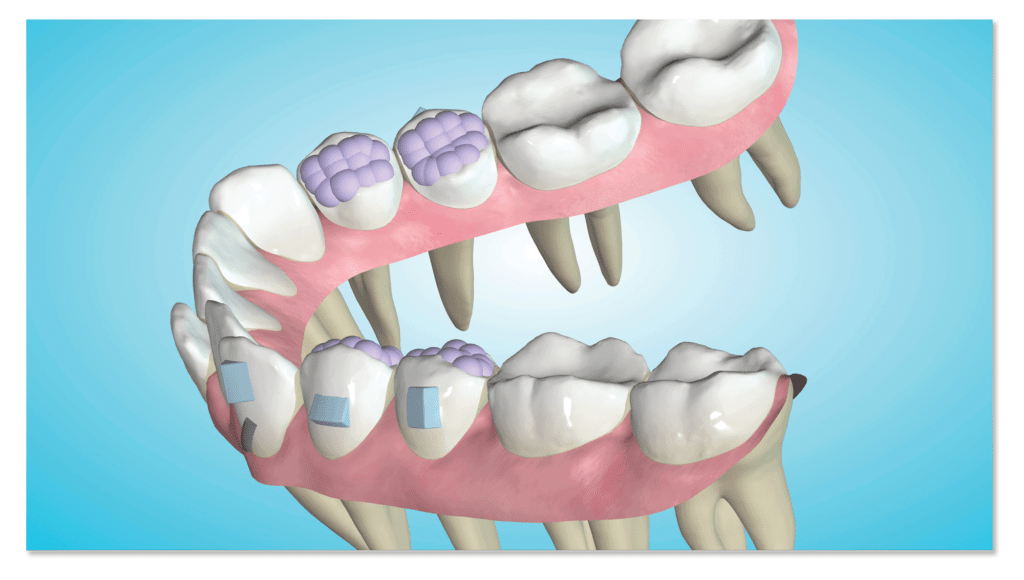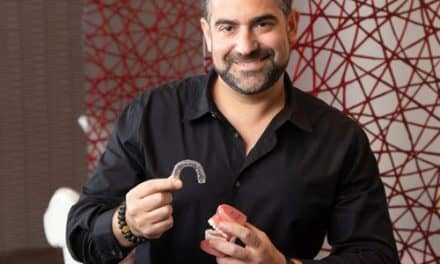Orthodontic Products spoke to Rick Matty, vice president and general manager of product innovation at Ormco, to find out more about the Spark Release 12 and what orthodontists can expect.
This interview has been edited for length.

Orthodontic Products: One of the key features of Spark Release 12 is the root visualization and integration of CBCT DICOM files. Why was the inclusion of this feature important to Ormco?
Rick Matty: The integration of CBCT, which takes 3D data and combines it with the 2D data from an intraoral scan, allows the doctors for the first time to see the roots and the crowns and develop a treatment plan that takes both into account. The best analogy is if you’re building a house, what you see from the outside is important. It’s critical. But the foundation is just as important. And, most doctors don’t see the roots, or the foundation, of the tooth when they’re doing a treatment plan. And this new feature will help doctors to create more stable treatment plans, more stable outcomes, and deliver results that will last for patients. This is a game changer for us.
We didn’t want to work on CBCT integration before we had our basics down well, and now that we’ve got the product working, and it’s working incredibly well, moving to these advanced features is the next logical step in really expanding the control and flexibility we give doctors to do the treatment planning that they need to do.
Read more: Ormco Rolls Out Spark Clear Aligner Release 12, Including CBCT Integration
OP: What does the workflow then look like for the orthodontist who is with this CBCT functionality?
Matty: As part of the submission process, they’ll now have an option to include or upload their DICOM files as part of that process, and then we’ll take that and use the file to modify our library roots to match the patient’s roots. We then send all of that data back to them as part of their treatment plan.

OP: Spark Release 12 now includes posterior bite turbos. Was the inclusion of this feature in response to doctor feedback?
Matty: The posterior bite turbos are a natural extension of a feature we already developed for the molars; and doctors were saying, “Hey, we’d like that same capability for premolars.” So, we moved them up and introduced it as part of R12 [Release 12].
And, that’s actually an important part of everything we do. It involves our doctors giving us feedback, testing things, letting us know what works and what doesn’t work, and they are actually intimately involved in all aspects of our design, so that when we come to market, they have their fingerprints all over this.
OP: With Release 12, there are more choices available to orthodontists when it comes to material choice. Specifically, this release makes the TruGEN XR materials available for primary cases of Spark 10 and Spark 20, whereas it had previously only been available for refinement cases. Dr Bill Dischinger has called TruGEN XR his “finishing wire in clear aligner therapy,” adding that “with brackets and wires, we like to use stiffer wires for the finishing stages of treatment. In clear aligner therapy, we have never had that ability until now. TruGEN XR, with its slightly stiffer properties, gives me the control I’m looking for in finishing the small details of each case.” Can you explain what makes the TruGEN material stand out with this release.
Matty: Our TruGEN material is a high performance, more flexible material. It’s perfect for starting a case, especially when you’ve got a lot of movement. You’re looking for something that’s going to work with the tooth and can help deliver movement over time. The TruGEN XR is more rigid, so, when you’re really looking to finish that smile, kind of lock things in place, that makes it perfect for that refinement. Doctors can use the TruGEN material to get them, say, three-quarters, 80% of the way there, and then use TruGEN XR, as Dr Dischinger says, “the finishing wire,” to really kind of lock in that final position.
Now, we extended it to Spark 10 and Spark 20, because for smaller cases, it’s very similar. A refinement is in essence a smaller case. So, for finishing it, it’s perfect. And, what we realize is that for Spark 10 and 20 cases, doctors might want that same rigidity, to think about it as a finishing wire in a small case. So, expanding it was sort of a natural evolution of that material and how doctors can use it.

OP: The Spark Approver software has a number of new features, among them support for scanned appliances. How will this addition help an orthodontist’s workflow?
Matty: Sometimes when we get a scan of a patient, doctors will leave attachments, and so what we’re doing now is we’re working with that. We’re allowing those to stay. It just gives the doctor more flexibility in how they’re submitting refinements and how they’re submitting records for the patients.
OP: What else can users expect with the new Spark Approver software?
Matty: There are a number of Approver features that we have included to help doctors. For example, we give them the ability to, when they’re moving teeth now, actually to enter numbers into a tooth movement cable versus trying to drag the tooth itself. They can do tilts and cants where they can move and angle the views that they see and simplify that.
Really, the improvements we’ve made for Approver are really around workflow and ease of use. But we’ve also done a number of, I guess, behind the curtains improvements to improve the responsiveness of the software. So, as the doctors are moving teeth around in 3D, it’s much smoother. It’s more responsive versus previous versions.
OP: Spark has been on the market now for almost 4 years now. What has most surprised you about the evolution of the product?
Matty: I think for me, I wouldn’t call it a surprise, maybe it’s what I’m most proud of is the pace of innovation that we’re able to operate at. We truly are a startup inside of a larger corporation. So, we are really seeing improvements, and not just small improvements, but meaningful improvements every 6 months. And, we’re working to even increase that further so that we can take an idea from a doctor and put it into reality very quickly. And so, it’s something that we’re incredibly proud of, where the product’s always getting better. It’s always giving the doctors more control, more flexibility. They can treat more patients. And, we’re delivering exceptional outcomes.
OP: What can Spark users expect in the future?
Matty: I would say if you look back at R10, R11, and now R12, it’s just an indication of what’s to come. And so, if you love working with a new, innovative, fast moving product, we intend to stay that way for a long time. And we’ve got some amazing things coming in our next release. That, to me, would be the message to users: We’re here, we’re innovating for them, and we want to give them what they need to be successful. And, we’ve got a track record for that, and we’re very proud of that. OP










